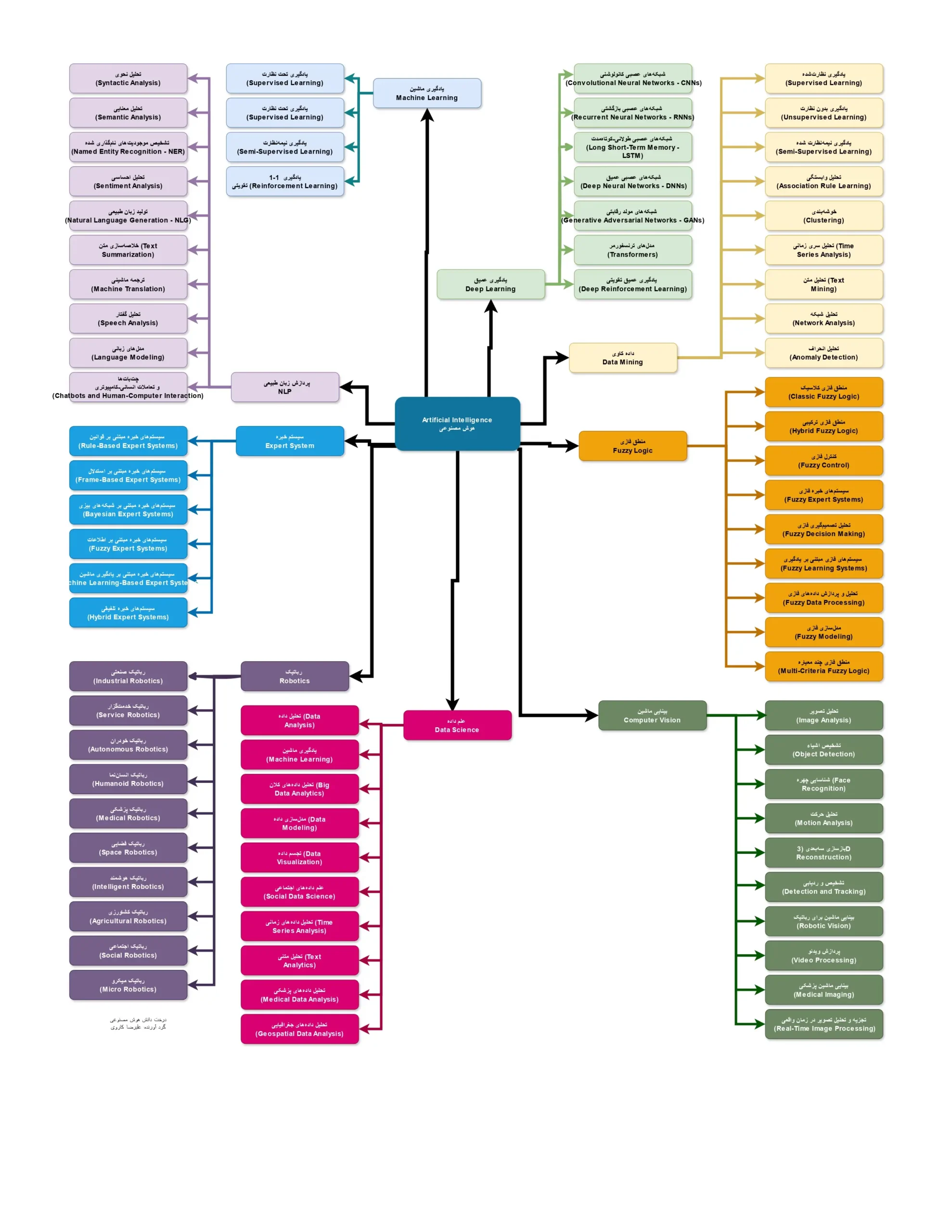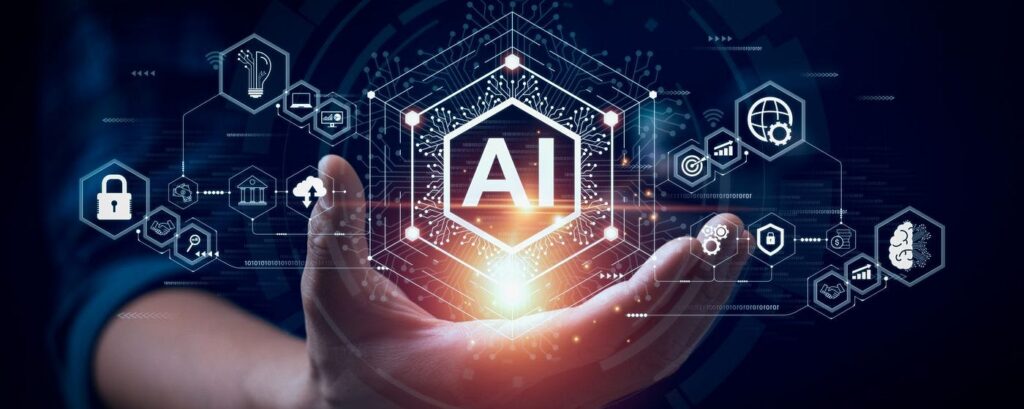
The specialized text about artificial intelligence :
– Machine Learning
Machine Learning is one of the key branches of artificial intelligence that enables systems to learn and improve from data without explicit programming. In other words, machine learning relates to algorithms and models that can identify patterns and make predictions by analyzing data.
– Deep Learning
A subset of machine learning that uses deep artificial neural networks to model and analyze complex data. This technique is particularly used in fields such as computer vision, natural language processing, and voice recognition.
– Natural Language Processing (NLP)
A branch of artificial intelligence that deals with the interaction between computers and humans through natural languages. The goal of NLP is to enable computers to understand and process human language so that they can perform various tasks in this field.
– Data Mining
Data mining is the process of discovering patterns and useful information from large data sets. This process involves using statistical techniques, machine learning, and artificial intelligence algorithms to analyze data and extract new knowledge from it. Data mining helps companies and organizations leverage their data and make better decisions.
– Expert Systems
An Expert System is a type of artificial intelligence system designed to solve specific problems and provide advice in a particular domain. These systems are built upon the knowledge and experiences of experts in a specific field and help users make better decisions. Expert systems are commonly used in areas such as medicine, engineering, finance, and management.
– Fuzzy Logic
Fuzzy Logic is a logical system that examines and analyzes uncertainty and ambiguity in data. Unlike classical logic, which considers only two states – true and false – fuzzy logic can take into account varying degrees of truth. This capability allows it to perform better with vague and imprecise data, which are common in many fields.
– Robotics
Robotics is the science that deals with the design, construction, programming, and use of robots. Robots are defined as automated or semi-automated machines capable of performing specific tasks. This science combines several different fields, including mechanical engineering, electrical engineering, computer science, and artificial intelligence.
– Computer Vision
Computer Vision is a branch of computer science and artificial intelligence that deals with the analysis and interpretation of images and videos by computers. The main goal of computer vision is to enable systems and algorithms to automatically and accurately extract useful information from images and to simulate human-like visual behaviors.
– Data Science
Data Science is a multidisciplinary field that focuses on extracting knowledge and insights from data. This science combines statistics, data analysis, machine learning, and computer science, enabling researchers and analysts to identify patterns and trends from large and complex data sets, leading to better decision-making.
